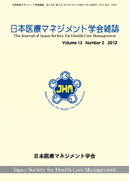Volume 17, Issue 2
Displaying 1-8 of 8 articles from this issue
- |<
- <
- 1
- >
- >|
Original Articles
-
Article type: Original Articles
2016Volume 17Issue 2 Pages 60-65
Published: September 01, 2016
Released on J-STAGE: March 10, 2022
Download PDF (800K)
Case Reports
-
Article type: Case Reports
2016Volume 17Issue 2 Pages 66-71
Published: September 01, 2016
Released on J-STAGE: March 10, 2022
Download PDF (773K) -
Article type: Case Reports
2016Volume 17Issue 2 Pages 72-74
Published: September 01, 2016
Released on J-STAGE: March 10, 2022
Download PDF (975K) -
Article type: Case Reports
2016Volume 17Issue 2 Pages 75-78
Published: September 01, 2016
Released on J-STAGE: March 10, 2022
Download PDF (650K) -
Article type: Case Reports
2016Volume 17Issue 2 Pages 79-82
Published: September 01, 2016
Released on J-STAGE: March 10, 2022
Download PDF (1208K) -
Article type: Case Reports
2016Volume 17Issue 2 Pages 83-87
Published: September 01, 2016
Released on J-STAGE: March 10, 2022
Download PDF (659K) -
Article type: Case Reports
2016Volume 17Issue 2 Pages 88-92
Published: September 01, 2016
Released on J-STAGE: March 10, 2022
Download PDF (2345K) -
Article type: Case Reports
2016Volume 17Issue 2 Pages 93-96
Published: September 01, 2016
Released on J-STAGE: March 10, 2022
Download PDF (695K)
- |<
- <
- 1
- >
- >|
